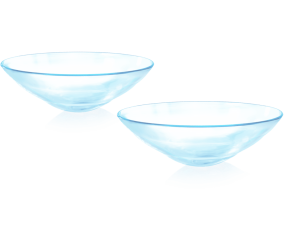Pain relief from GVHD
Find relief from the complications of ocular GVHD and start seeing the world again.
Rachel is 38 years old and a mother of two children, ages 4 and 6. She works full-time as a freight supervisor for a regional transportation company. Rachel had leukemia and then a bone marrow transplant in 2018. About 10 months after her bone marrow transplant, Rachel developed ocular GVHD.
Rachel’s symptoms:
Extreme dry eyes and extreme light sensitivity. Rachel could barely open her eyes, and they were always sore. Her ocular GVHD resulted in severe damage to her ocular surface.
Ocular GVHD’s affect on her life:
“I took long-term disability leave from my job. I manage a team of drivers in a distribution center, organizing people and equipment to move freight but I couldn’t work anymore because I couldn’t keep my eyes open for more than a couple of minutes at a time. I had so much trouble caring for my children, too. I couldn’t work, I had a lot of trouble looking at screens, and I couldn’t drive.”


Rachel’s Treatment Path:
“I spoke with my oncologist who referred me to an ophthalmologist. He had me try drops for dry eye. I was using the drops at least 80 times a day (about once every 10 minutes over a 12-hour period.) My ophthalmologist then prescribed a topical corticosteroid to treat my inflammation. After 2 years of constant eye drop use, along with needing support for all my daily living activities including shopping and getting my kids to school, my ophthalmologist referred me to a BostonSight PROSE Provider. I wish it would have happened sooner!
My PROSE Provider also fits scleral lenses but based on the severity of my condition, she determined that PROSE was the best solution for me. I was really worried about using PROSE devices, adding one more routine to my life. And they seemed so big! But the doctors understood immediately what I was going through, and knew I was a good candidate for PROSE. I had a series of appointments over a few weeks at the clinic for my treatment and to learn to insert and remove my PROSE devices, but now it’s like second nature.”
“I can’t live without my PROSE devices. Now I can see everything again, especially the joy on my kids’ faces.”
How is PROSE Different From a Scleral Lens?

While scleral lenses can help many patients, their customization capabilities are limited in comparison to PROSE treatment. PROSE uses fully custom prosthetic scleral devices ranging from 14mm to 23mm and allows the PROSE Fellow far more flexibility in its design versus traditional scleral lenses.
And PROSE is more than just a scleral lens – it is a comprehensive medical treatment delivered by specially trained PROSE Fellows in collaboration with corneal specialist ophthalmologists, working in partnership with your other medical providers to ensure treatment manages your underlying condition. There are fewer than 25 PROSE Fellows in the world. PROSE is available at top-ranked academic medical centers and clinics in the U.S. and Canada, as well as globally. Learn more about PROSE treatment here.
97% of patients with ocular complications from GVHD reported improved eye health, vision, and quality of life with PROSE treatment by BostonSight.
2024 BostonSight Survey of 2,000 PROSE patients
Patients wearing PROSE devices and scleral lenses reported improvement in dryness, eye pain, and quality of life.
Clinical Ophthalmology. 2021 Dec; 15: 4829-4838.